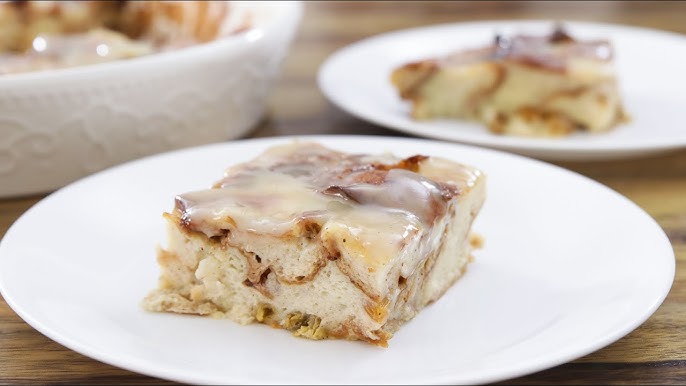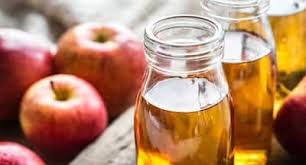Best Bread Pudding Recipe: Bread pudding is one of those desserts that beautifully transforms everyday ingredients into something utterly magical. It’s essentially a baked dessert made from stale bread, milk or cream, eggs, and sugar. Sounds simple, right? But don’t let that fool you—it’s a rich, custardy delight that can be tweaked and twisted to suit any palate. Whether it’s served warm with a drizzle of caramel sauce or cold with a scoop of vanilla ice cream, bread pudding brings comfort and nostalgia to the table.
The core idea is simple: bread acts like a sponge, soaking up a rich custard mixture, and when baked, the edges crisp up while the center remains wonderfully soft and flavorful. It’s the kind of dish that makes you feel like you’re getting a warm hug from the inside out. Perfect for using up leftover bread, it’s a waste-not-want-not treat that feels like luxury with every bite.
A Brief History of Bread Pudding
Bread pudding has humble origins, dating back to the 11th or 12th century in Europe. Back then, food waste was not an option, and cooks got creative with their leftovers. They discovered that soaking stale bread in milk and eggs and baking it resulted in a filling, satisfying dessert. As it spread across cultures, it adapted to local ingredients and tastes.
In the United Kingdom, it’s often a sweet, spiced dish with dried fruits. In New Orleans, it’s a staple in Creole and Cajun kitchens, usually served with a warm whiskey or rum sauce. Across Latin America, Asia, and the Middle East, you’ll find variations using coconut milk, tropical fruits, and regional spices. It’s truly a global dessert with a timeless appeal.
Why This is the Best Bread Pudding Recipe
Secret Ingredients That Make a Difference
So, what makes this recipe stand out among the rest? It’s all in the attention to detail and those little extra touches. While most recipes stick to the basics, this version adds richness and flavor by using a mix of heavy cream and whole milk for the custard base. The result is a silkier, more luxurious texture that elevates the dish from basic to extraordinary.
Vanilla extract and ground cinnamon are essentials, but the real game-changers? A touch of nutmeg, a splash of bourbon (optional but encouraged), and brown sugar instead of white for a deeper, caramelized sweetness. Raisins or chopped dates soaked in warm milk or rum add a burst of flavor that seeps into every bite.
Texture and Flavor Combination
The beauty of bread pudding lies in its texture—crispy, golden edges paired with a soft, custardy center. Using the right kind of bread (more on that below) ensures that you get that ideal contrast in every bite. As it bakes, the sugar caramelizes, forming a golden crust while the inside remains moist and melt-in-your-mouth tender.
Flavor-wise, it’s a harmony of warm spices, subtle sweetness, and creamy richness. Every forkful feels indulgent yet familiar. And when you serve it with a vanilla sauce or a drizzle of caramel, it becomes a dessert that’s nothing short of divine.
Ingredients You’ll Need
Bread Selection – What Works Best
The choice of bread can make or break your bread pudding. Soft sandwich bread won’t give you the texture you need. Instead, go for sturdier varieties like:
- Brioche – Buttery and slightly sweet, ideal for a rich custard base.
- Challah – Light, airy, and just the right amount of sweet.
- French Bread or Baguette – Crusty and absorbent, offering a firmer structure.
Day-old or slightly stale bread works best because it soaks up the custard without falling apart. Fresh bread tends to turn mushy, which we definitely don’t want.
Key Ingredients for Custard
Here’s what you’ll need to create a lusciously rich custard:
- Eggs – The backbone of the custard, adding structure and richness.
- Heavy Cream + Whole Milk – A mix that ensures a creamy but not overly heavy texture.
- Brown Sugar – Adds a deeper, molasses-like sweetness.
- Vanilla Extract – For that warm, classic flavor.
- Ground Cinnamon & Nutmeg – A must for that cozy, spiced aroma.
These ingredients create a custard that’s silky, flavorful, and the perfect match for the bread’s absorbent nature.
Optional Add-ins for Extra Flavor
Want to jazz things up? Try these delicious additions:
- Raisins, Sultanas, or Dried Cranberries
- Chopped Pecans or Walnuts
- Dark Chocolate Chips
- Orange or Lemon Zest
- Bourbon or Rum (1-2 tablespoons)
These ingredients can add complexity, texture, and an extra layer of flavor that takes the pudding to another level.
Kitchen Tools You’ll Need
Must-Have Utensils and Bakeware
Bread pudding doesn’t require any fancy gadgets, but a few kitchen basics will make the process easier and ensure great results:
- Mixing Bowls – One for the custard, one for soaking.
- Whisk – For blending eggs and milk smoothly.
- Baking Dish (9×13 inches) – Ceramic or glass works best for even heat distribution.
- Measuring Cups and Spoons – Precision matters!
- Spatula or Wooden Spoon – For mixing everything together gently.
- Foil or Parchment Paper – To prevent over-browning on top during baking.
Once you’ve gathered these, you’re set to move on to the fun part—making the pudding.
Step-by-Step Instructions
Step 1 – Preparing the Bread
Start by cubing your bread into 1 to 2-inch pieces. If it’s not stale, you can dry it out in the oven. Preheat to 300°F (150°C) and bake the cubes on a tray for 10–15 minutes until they’re slightly crisp but not toasted. This step ensures the bread can absorb the custard without becoming soggy.
Step 2 – Making the Custard
Now we move on to the heart of the recipe—the custard. In a large mixing bowl, crack 4 to 5 large eggs and whisk them until they’re slightly frothy. This aeration is key to a light, fluffy pudding interior. Slowly add in 2 cups of whole milk and 1 cup of heavy cream, whisking constantly to keep the mixture smooth.
Next, stir in ¾ cup of packed brown sugar, 2 teaspoons of vanilla extract, 1 teaspoon of ground cinnamon, and ¼ teaspoon of freshly grated nutmeg. If you’re adding a splash of bourbon or rum, now’s the time—just a tablespoon or two goes a long way in enhancing the depth of flavor.
The custard should be well-blended, rich, and aromatic at this point. The spices should be visible, and the mixture should have a slightly thick consistency due to the heavy cream. Let it sit for a couple of minutes so the flavors meld together while you prep the bread in the baking dish.
Step 3 – Combining Bread and Custard
Grab your prepared bread cubes and place them evenly in your greased 9×13-inch baking dish. If you’re including add-ins like raisins or chocolate chips, scatter them throughout the bread for an even distribution.
Now, slowly pour the custard mixture over the bread, making sure every piece is well-coated. Use a spatula or spoon to gently press the bread down into the custard. This helps ensure it soaks up all that goodness.
Let the dish sit on the counter for at least 15–30 minutes before baking. This resting period allows the bread to fully absorb the custard, leading to a better texture once baked. You can even cover and refrigerate it overnight if you want to make it ahead of time.
Step 4 – Baking to Perfection
Preheat your oven to 350°F (175°C). Cover the baking dish with foil to prevent the top from browning too quickly, and place it in the middle rack of your oven. Bake for about 30 minutes covered, then remove the foil and continue baking for another 20–25 minutes.
You’ll know it’s done when the edges are golden and crispy, and the center is puffed up and set but still slightly wobbly. A knife inserted in the middle should come out mostly clean, with a few moist crumbs.
Let it cool for at least 10 minutes before serving—this helps the custard firm up a bit and makes slicing easier. The aroma during this stage? Absolute heaven.
Step 5 – Serving and Garnishing
This is where things get really fun. Serve your bread pudding warm with a generous drizzle of caramel sauce, vanilla sauce, or even a boozy bourbon glaze. A scoop of vanilla ice cream or a dollop of whipped cream never hurts either.
Want to make it fancy? Dust the top with powdered sugar and a sprinkle of cinnamon. For a crunch factor, add a few candied pecans or toasted almonds. It’s the kind of dessert that can be as casual or as elegant as you want.
Whether you’re making it for a holiday feast, a family dinner, or just because—you’re guaranteed to impress with this bread pudding.
Tips for Perfect Bread Pudding Every Time
Common Mistakes to Avoid
Bread pudding may seem straightforward, but a few missteps can lead to disappointing results. One of the most common errors? Using fresh, soft bread. Fresh bread doesn’t absorb the custard as well, resulting in a soggy and mushy texture. Always opt for day-old or slightly stale bread—it makes all the difference.
Another mistake is rushing the soaking time. You can’t just pour the custard and toss it into the oven. The bread needs time to soak up all those flavors to ensure a cohesive, tender result. At least 30 minutes of soaking is ideal, though overnight soaking yields even better outcomes.
Overbaking is another pitfall. If you leave it in the oven too long, you’ll end up with a dry pudding, which no one wants. Keep an eye on it and do the knife test—you’re looking for moist crumbs, not raw custard or bone-dry interiors.
Lastly, don’t forget to balance your spices and sweetness. Overdoing the sugar or nutmeg can overwhelm the dish. Stick to measured amounts and always taste your custard mixture before combining it with the bread.
How to Make It Extra Moist and Flavorful
The goal is a moist, melt-in-your-mouth texture with a rich, creamy flavor. Here’s how you can get there:
- Use a milk-cream combo: Whole milk adds moisture, while heavy cream brings richness.
- Add a touch of booze: A splash of bourbon or dark rum intensifies flavors and adds warmth.
- Soak thoroughly: Letting the bread absorb the custard ensures every bite is evenly moist.
- Cover when baking: Covering for the first half of the baking time keeps the top from overcooking while the inside finishes setting.
- Rest before serving: Letting the pudding sit for 10–15 minutes after baking allows it to firm up slightly and develop even more depth.
Want an extra touch of decadence? Try brushing the top with melted butter and sprinkling it with sugar before the final bake—it’ll caramelize and give you that irresistible golden crust.
Variations and Twists to Try
Chocolate Bread Pudding
For all the chocoholics out there, this version is a dream come true. Add a cup of semi-sweet chocolate chips or chunks to the bread before pouring over the custard. You can even stir a few tablespoons of cocoa powder into the custard for a deep, fudgy flavor.
Serve it warm with chocolate sauce or a scoop of mocha ice cream for maximum indulgence. You’ll get melty chocolate pockets and a rich, brownie-like texture with every bite.
Apple Cinnamon Version
Craving fall flavors? Dice up a couple of peeled apples (Granny Smith works great) and toss them with cinnamon and a little sugar before mixing them in with the bread. The apples soften as the pudding bakes, adding bursts of sweet-tart flavor throughout.
Top it with caramel sauce and crushed walnuts, and you’ve got an autumn dessert that tastes just like home.
Boozy Bourbon Bread Pudding
This adult twist takes the classic up a notch. Soak your raisins or chopped dates in bourbon before adding them in. Then, add a tablespoon or two of bourbon into the custard mix itself.
Once it’s baked, serve it with a warm bourbon caramel sauce for a bold, flavorful dessert that packs a punch.
Storage and Reheating Tips
How to Store Leftovers
Bread pudding stores beautifully, which makes it great for make-ahead desserts. Allow it to cool completely, then cover tightly with plastic wrap or foil and store in the refrigerator. It’ll stay fresh for up to 4 days.
You can also portion it out into individual containers if you want to meal-prep dessert for the week—because yes, that’s a thing and we support it.
Best Reheating Methods
To reheat, you have a few options:
- Microwave: Place a slice on a microwave-safe plate and heat in 30-second intervals until warm.
- Oven: Cover with foil and bake at 325°F (160°C) for about 10–15 minutes to restore that just-baked texture.
- Stovetop (in a pinch): Use a covered skillet over low heat and steam it with a splash of water or milk until heated through.
If it looks a little dry, you can always drizzle some cream or sauce over the top before reheating to bring back moisture.
Nutritional Information
Calories and Nutrients Breakdown
Bread pudding is definitely an indulgent dessert, but knowing what’s in it helps you enjoy it mindfully. Here’s a general nutritional breakdown for one serving (based on a 9×13 dish cut into 12 pieces):
| Nutrient | Amount per Serving |
|---|---|
| Calories | 320–400 kcal |
| Total Fat | 15–20g |
| Saturated Fat | 8–10g |
| Carbohydrates | 40–50g |
| Sugar | 25–30g |
| Protein | 6–8g |
| Fiber | 1–2g |
These numbers will vary depending on the type of bread, milk, and add-ins you use. For a lighter version, try using reduced-fat milk, cutting back on sugar, and skipping heavy cream.
FAQs about Best Bread Pudding Recipe
1. What is the best bread to use for bread pudding?
The best bread for bread pudding is day-old brioche, challah, or French bread. These types soak up the custard beautifully without turning soggy.
2. Can I make bread pudding ahead of time?
Absolutely! Bread pudding can be made a day in advance. Just cover and refrigerate, then bake it fresh when ready to serve.
3. How do I know when bread pudding is done baking?
Your bread pudding is ready when the top is golden brown and the custard is set. Insert a knife in the center—if it comes out clean, it’s done.
4. Can I use regular sandwich bread?
Yes, you can use sandwich bread in a pinch, but thicker, sturdier breads give a richer texture and better flavor.
5. Is bread pudding supposed to be served hot or cold?
It’s delicious either way! Serve it warm with a scoop of vanilla ice cream or cold with a drizzle of caramel sauce.
6. How should I store leftover bread pudding?
Store leftovers in an airtight container in the fridge for up to 4 days. Reheat in the oven or microwave before serving.
7. Can I freeze bread pudding?
Yes, bread pudding freezes well. Wrap tightly and freeze for up to 2 months. Thaw overnight and reheat before enjoying.
Conclusion
The best part? You can tailor it to suit your taste. Want it fruity? Add apples or berries. Craving something decadent? Chocolate and bourbon it is. Or maybe you’re a purist who just wants that classic, custard-soaked goodness with a crisp top and soft, spiced center.
So, next time you find yourself with leftover bread and a craving for comfort food, give this recipe a try. It’s simple, satisfying, and a guaranteed crowd-pleaser. Go ahead, indulge—you deserve it.



